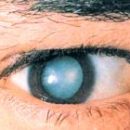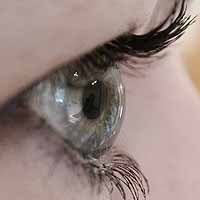Trachoma and Parathoma are severe eye disease caused by chlamydia. The flow of these diseases is very similar, but there are differences. Read more in the article.
Content
Paratrohoma and Trachoma - Main differences
 Among the diseases of the eyes caused by chlamydia, allocate the trach and paramatrate. These two diseases are very similar, but there are small differences.
Among the diseases of the eyes caused by chlamydia, allocate the trach and paramatrate. These two diseases are very similar, but there are small differences.
Trachoma is an inflammatory disease of the organ of vision caused by a certain type of chlamydia and an amazing conjuncture, a cornea, tear bodies, eyelids.
Looking like a trachy eye eye is paramatom.
Pararahoma is an inflammatory eye conjunctivism. Paranthoma or chlamydial conjunctivitis is called an even oculo-shaped infection. Unlike trachoma, which causes a specific type of chlamydia, living only in the eye, paramatrate causes chlamydia, which affect the urinary system (urogenital chlamydia). Tirty usually people who are leading active sex life. Infection enters the eye from urinary and genital organs with unwashed hands, less often with towels, when bathing in the pool. Unlike trachomas, very often chlamydial conjunctivitis is combined not only with chlamydial infection of the urinary tract, but also with the lesion of the joints (Reiter syndrome).
Sometimes chlamydial conjunctivitis can occur isolated. Eyes more often. The manifestation of the paramathoma is often similar to the trachoma. The disease usually begins acutely from edema and redness. After a few days, it increases and becomes painful eye-haired salid iron. From the eye, the mucous membrane is highlighted, then purulent content. After 1-2 weeks, follicles (bubbles) of large and small sizes appear on the mucous membrane. Sometimes follicles appear on the cornea. The main clinical sign in contrast to the trachus is the lack of scarring conjunctiva. Usually after 2-3 months, patients are recovered, but sometimes the disease takes a chronic course.
Very rare chlamydial conjunctivitis can occur heavily, reminding the fuck.
Disease of newborns
Unlike trachomas, under paramathoma, infection of newborn children from patients with urogenital chlamydia mothers. Newborn children are infected with chlamydial infection when passing through the generic paths of the mother in childbirth.
Approximately 30% (20-50%) of newborns born in patients with chlamydia women, conjunctivitis develops in the first 2 weeks.
The defeat of the eyes in newborns caused by chlamydia was first described in 1910. ophthalmologists who suggested the presence of a specific infectious agent in the genital paths of the mother. The disease begins in the first 5 -14 days after childbirth, most often - in the first month of life. Unlike the paramathum, the infection of the trachoma is possible only from the patient of the trachoma of a person (directly or through the items), whether it is an adult or a child.
Almost always in newborns suffer both eyes. Conjunctivitis proceeds acutely accompanied by abundant purulent emissions. Sometimes films that are easily removed on the mucous membrane of the eye are formed. More often, the film occurs in the conjunctival of the lower eyelid
In most cases, the disease even without treatment is allowed independently, in the first months of life.
Caesarean section, produced with whole fruit shells, can prevent infecting newborn chlamydia.
Treatment of chlamydial eye diseases
Assigns laying in a conjunctival bag of ointments with antibiotics 5-6 times a day. Unlike trachomas, in the treatment of paramathum, the main disease is also necessary - urogenital chlamydia.









